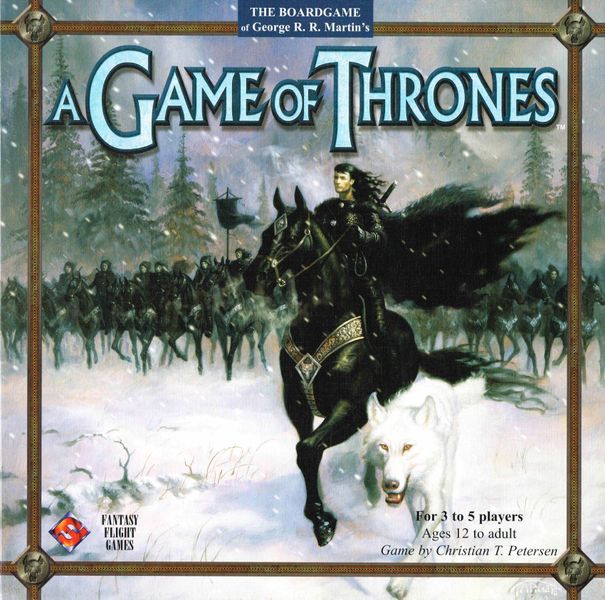A Game of Thrones (2003) Board Game
A Game of Thrones Board Game is based on the popular book series by George R.R. Martin and the HBO television series. It was first released in 2003 by Fantasy Flight Games and has since become a cult classic among board gamers. The game is known for its strategic depth and political intrigue, drawing players into the world of Westeros as they vie for control of the Iron Throne.
Game Components of A Game of Thrones
How To Setup A Game of Thrones
To set up the game, players randomly select a starting House card and place their starting units on the board according to the card’s instructions. Each player also places their House markers on the Supply and three Influence tracks. They receive a hand of seven House character cards for battles. The Westeros decks and Wildling threat token are shuffled and placed on the board. Players with the highest positions on the Influence tracks start with special tokens.
Gameplay Mechanics and Game Objective
Player Experience
In A Game of Thrones, players navigate the intricate world of Westeros, managing armies, diplomacy, and deception. The game is renowned for its complex strategy, requiring a blend of military might, alliances, and cunning. Players must balance short-term needs with long-term goals, making it a deeply engaging and challenging experience.
Pros
Cons
Personal Thoughts on A Game of Thrones
A Game of Thrones is perfect for fans of George R.R. Martin’s series and strategy enthusiasts. It demands a commitment tolearning its intricate mechanics but rewards with a deeply satisfying and immersive experience. This game is ideal for those who enjoy complex strategy, diplomacy, and the thrill of outmaneuvering opponents. However, it may not be the best fit for casual gamers or those looking for a quick gameplay experience.
We are supported by our audience. When you purchase through links on our site, we may earn an affiliate commission, at no extra cost for you. Learn more.

